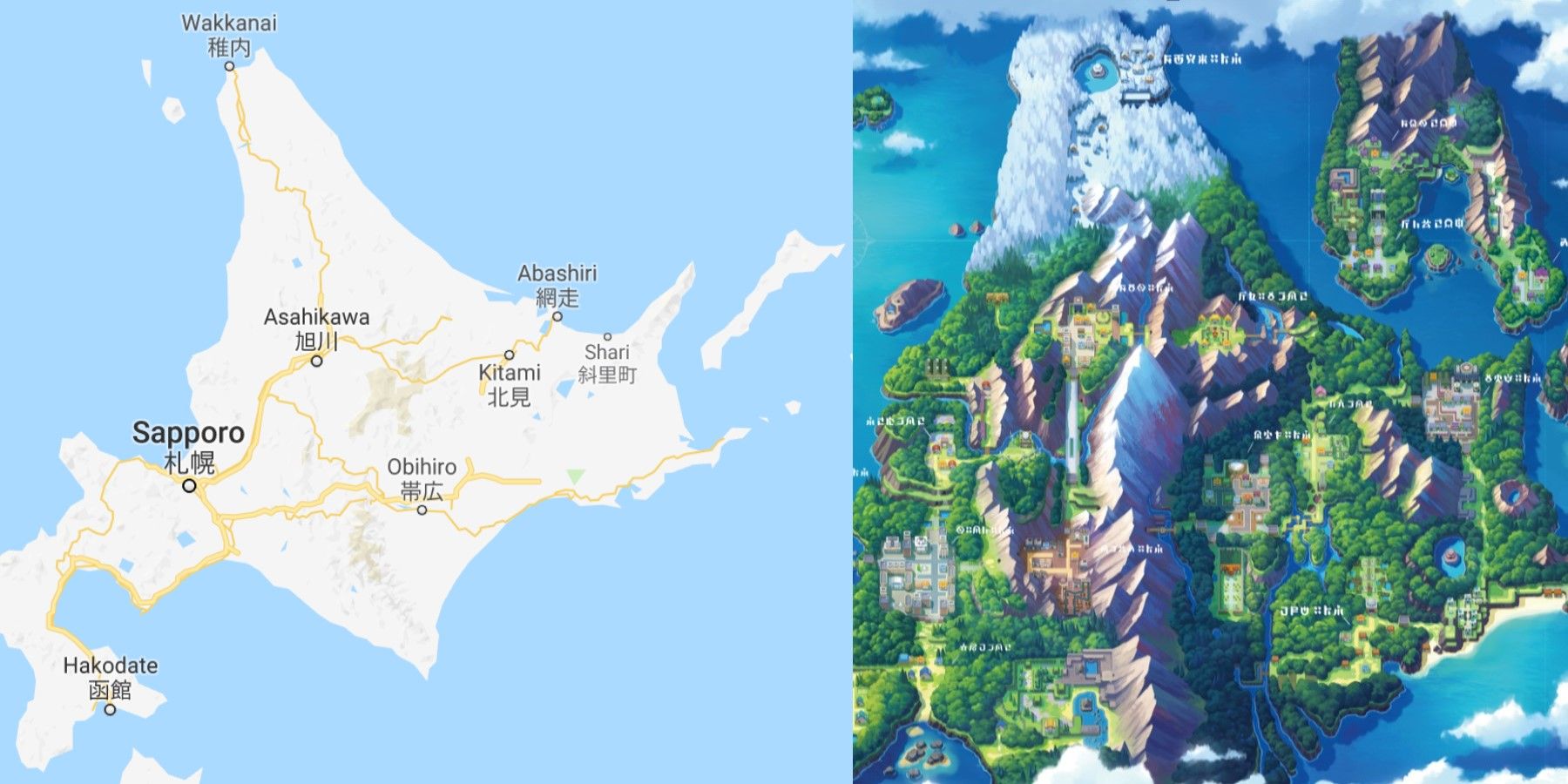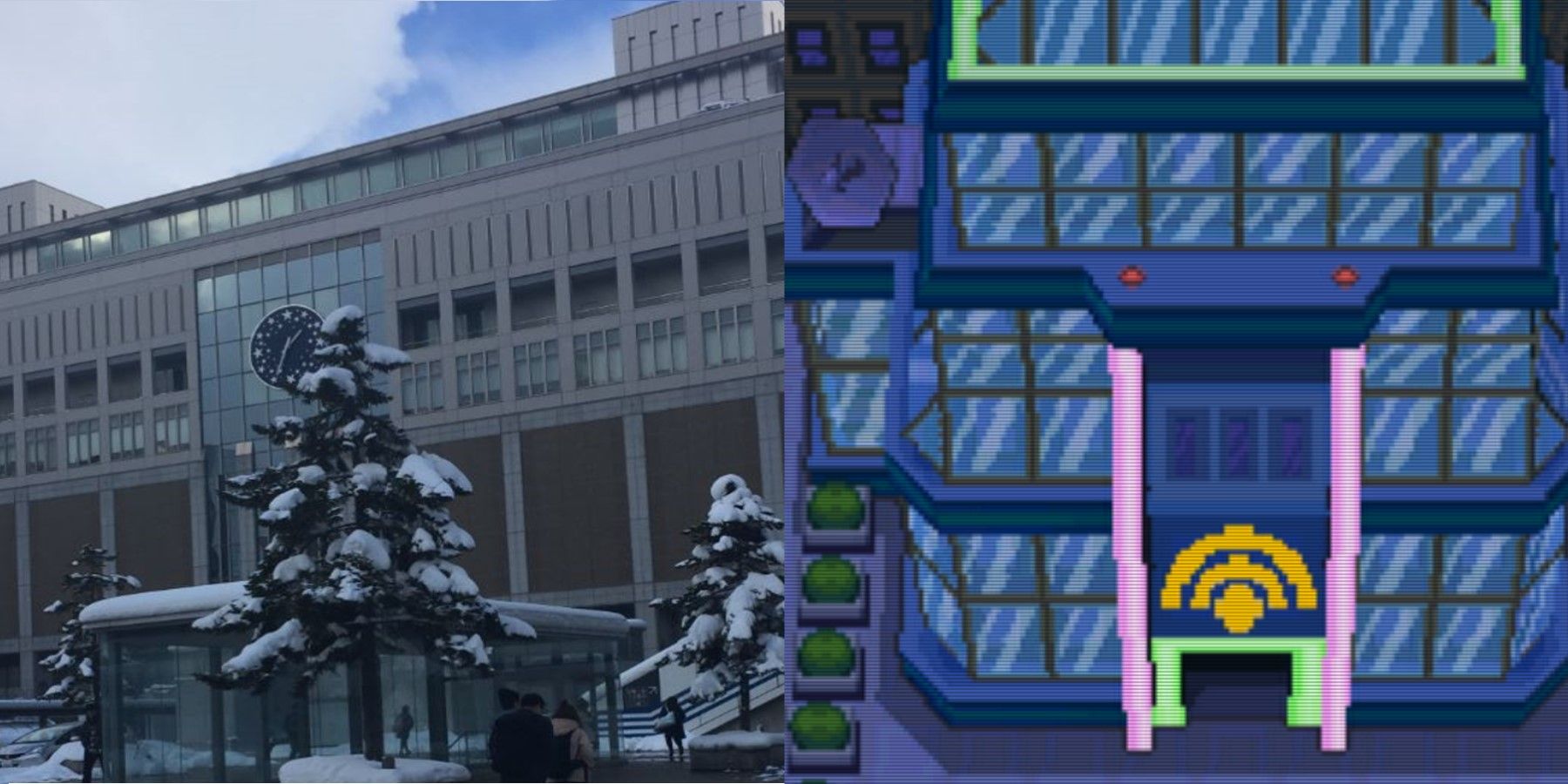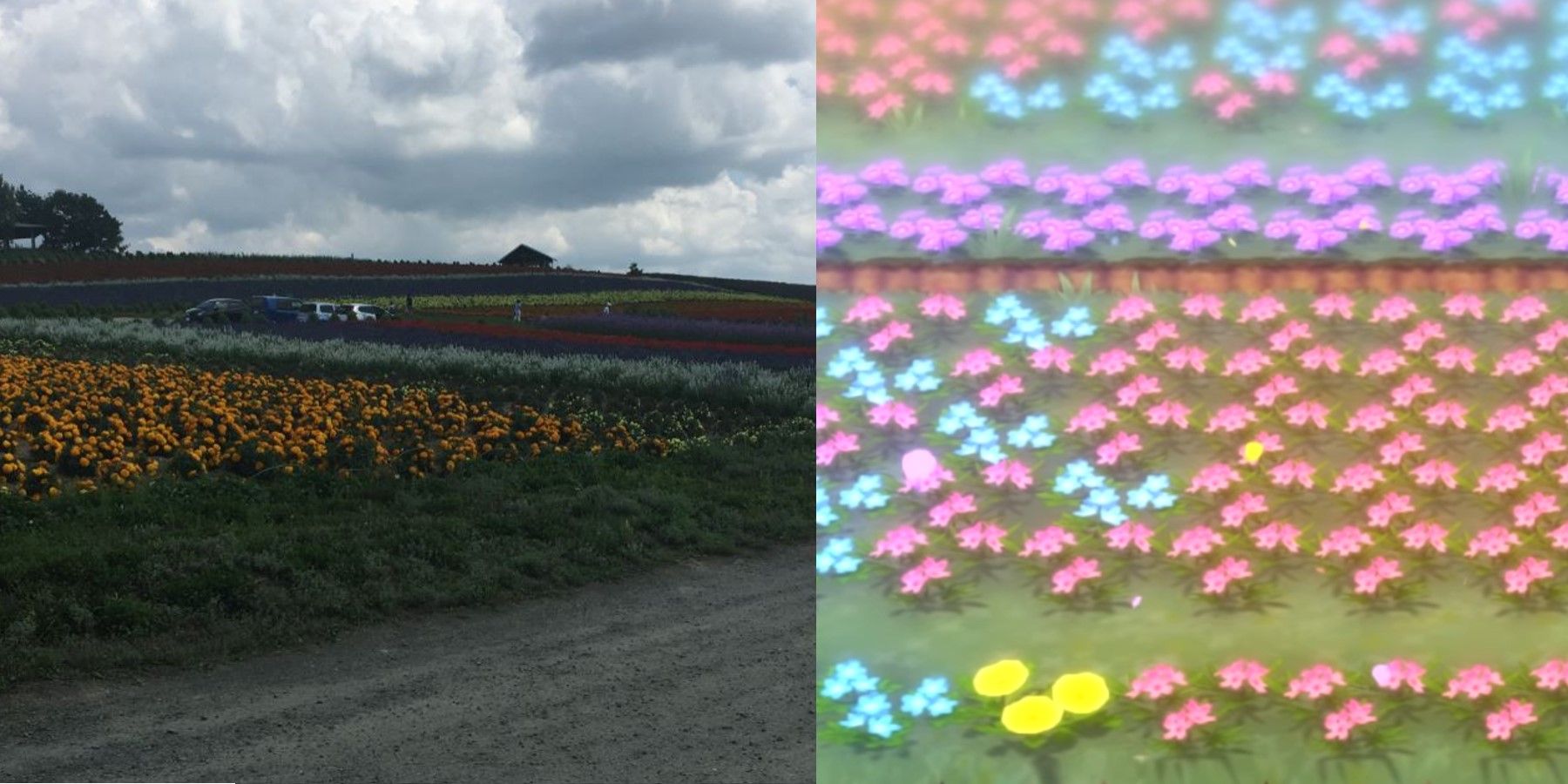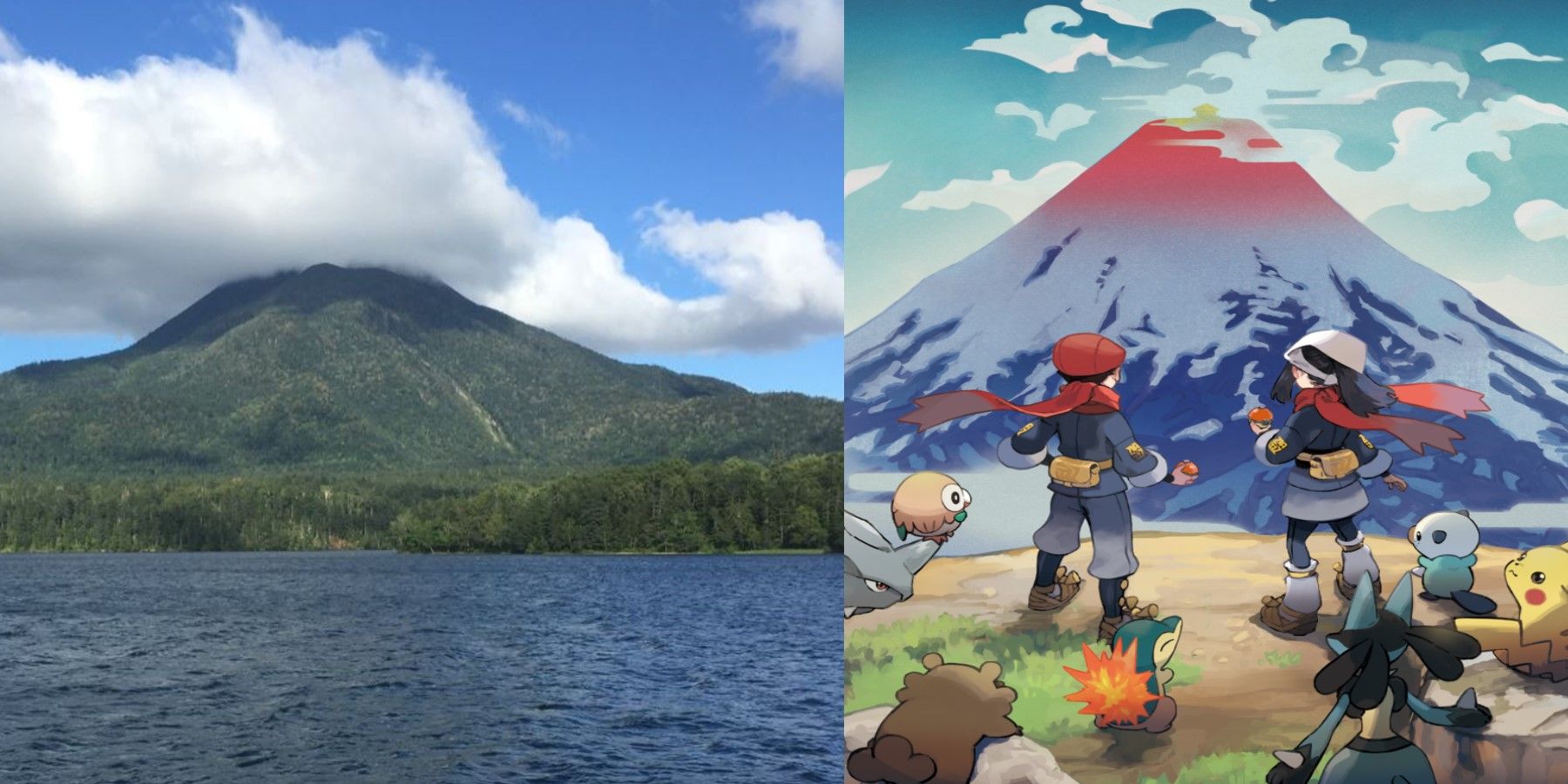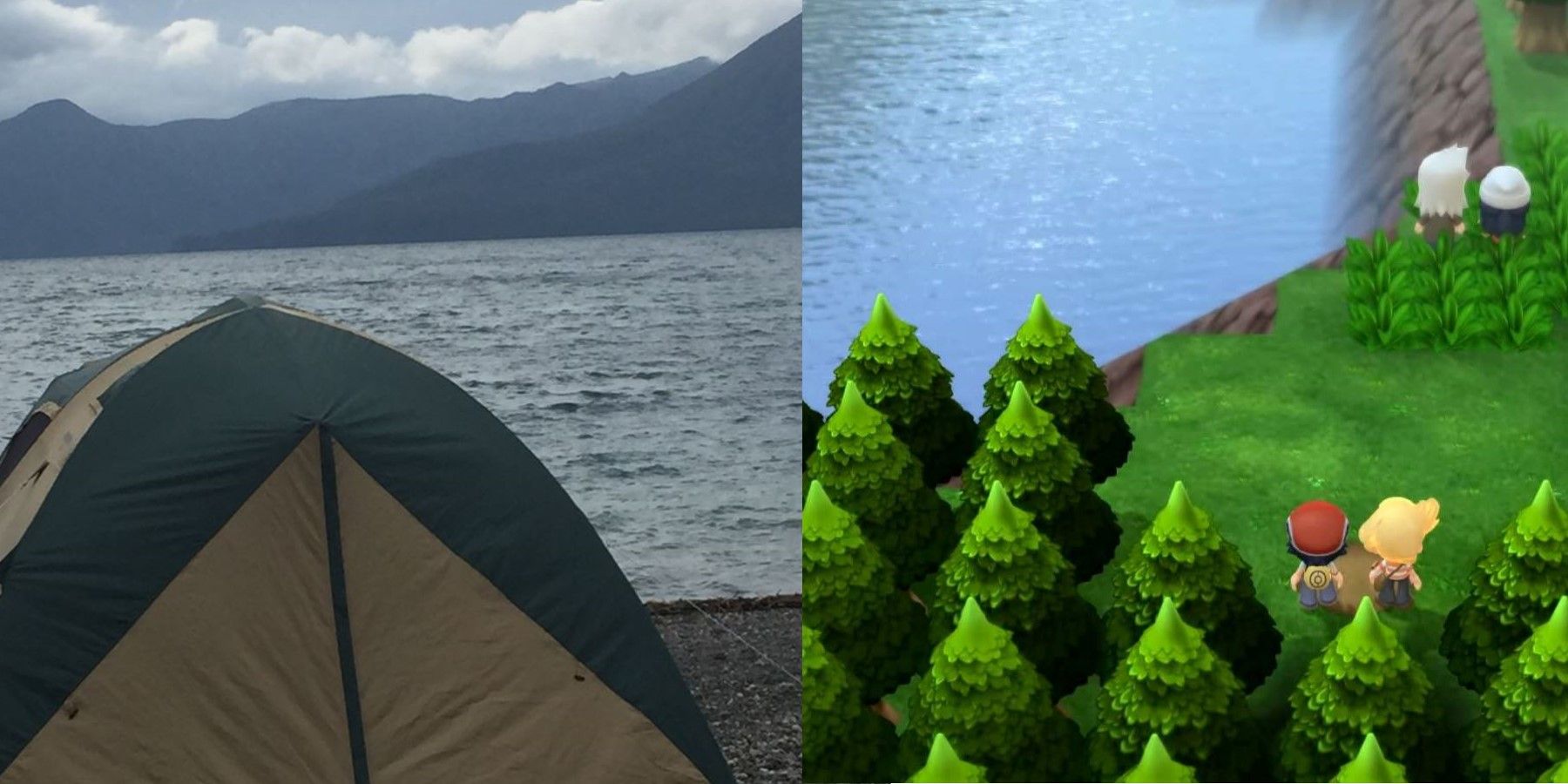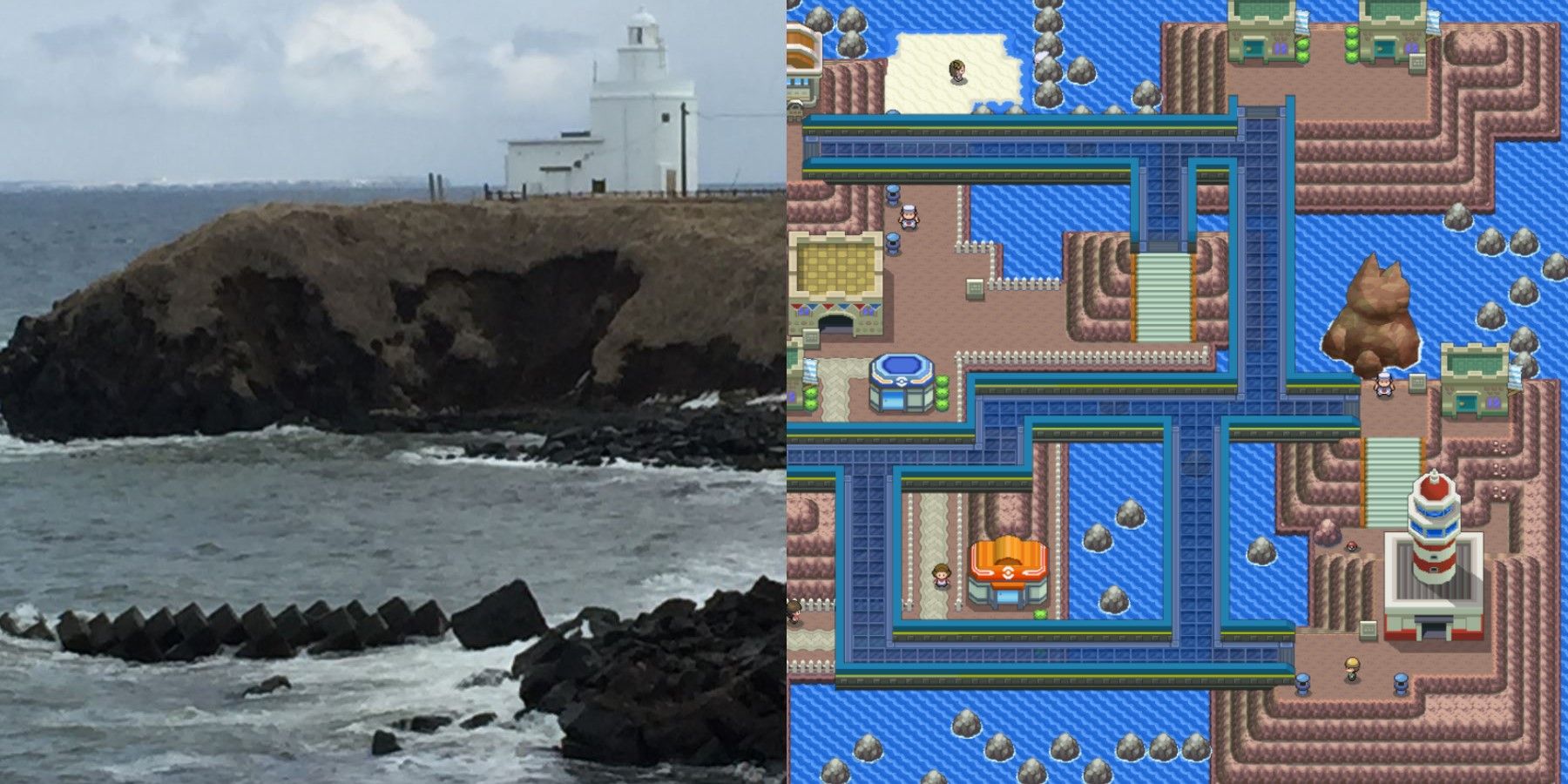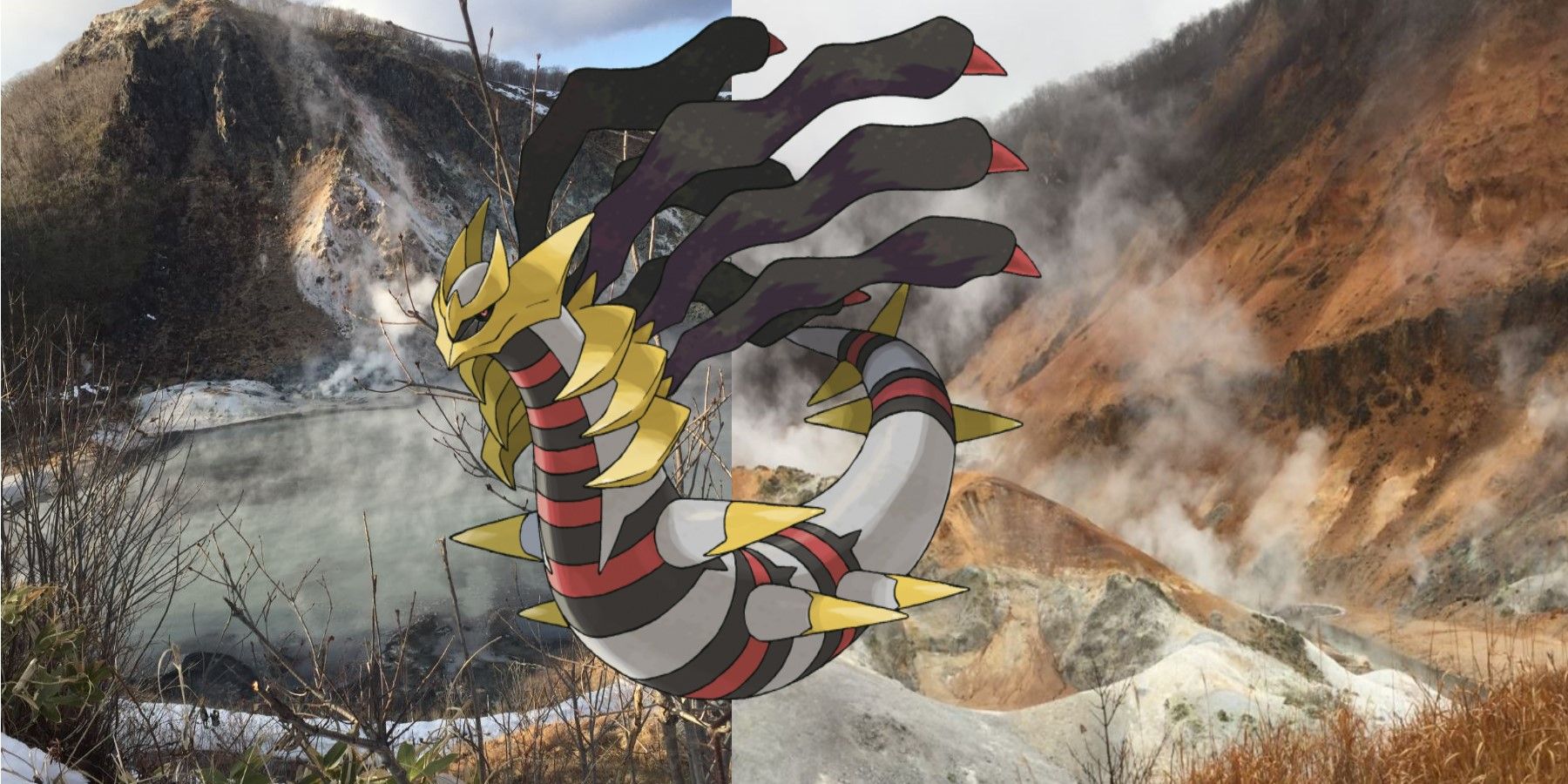Pokemon's Sinnoh region has recently returned to the spotlight thanks to the remakes Pokemon Brilliant Diamond and Shining Pearl, as well as the upcoming adventure game Pokemon Legends: Arceus. Sinnoh's towns, landmarks, weather patterns, and even trainer styles — particularly in Pokemon Legends: Arceus — all draw inspiration from one particular part of Japan.
The Sinnoh region is based primarily on Hokkaido, Japan’s northernmost island and largest prefecture. It shares Hokkaido’s unique “whale tail” shape; cold weather; frequent snowfall; and landscape of clear lakes, deep forests, and tall mountains. Legends: Arceus even adds a seasonal cycle to best represent Hokkaido's ever-changing weather. It is home to the Ainu people, whose culture informs the aesthetic and plot of Legends: Arceus.
Sapporo - Jubilife City
Much of Hokkaido’s population is concentrated in its largest city Sapporo, known for its skyscrapers, ramen shops, and annual Snow Festival. Each February, thirteen-plus blocks of the Odori Park area are home to giant snow sculptures celebrating Japan’s history and pop culture. Visitors can usually spot a snow Pikachu or one of the Sinnoh starters there. A frequent sight at the Snow Festival is Piplup, who recently appeared in a Gold's Gym advertisement.
Sapporo’s TV Tower becomes the Jubilife TV building in Diamond and Pearl, where Trainers can purchase accessories or play the Pokemon Lottery. The Global Terminal building, which allows for trading with trainers around the world, is inspired by the place at the heart of the city: Sapporo Station. Far more than just a place to catch a train, this multi-towered structure features restaurants, a movie theater, a hotel, and an entire underground shopping mall - though not one as large as the Grand Underground area added to Brilliant Diamond and Shining Pearl.
Furano - Floaroma Town
In the center of Hokkaido is Furano, a resort town packed with vacationers. In the winter, visitors can ski, snowboard, or take a hot air balloon ride to view Hokkaido’s famous "diamond dust:" early-morning snow crystals caught in midair. In the spring and summer, Furano is known for its flowers, which are artfully arranged in fields of poppies, lupins, sunflowers, salvia, and lavender.
Sinnoh’s Floaroma Town and neighboring Floaroma Meadows replicate these fields with patterns of colorful flowers arranged in stripes. According to an old Sinnoh legend, the flowers were first brought to the area by the Mythical Pokemon Shaymin. Floaroma is also where players can first purchase berries, a nod to Furano’s fruit orchards and winery.
Ezo Mountain Chain - Mt. Coronet
Cutting across the middle of the prefecture is the Ezo Mountain chain, consisting of the Hidaka, Ishikari, Kitaumi, Teshio, and Yubari Mountains. It is popular among skiers and hikers and is home to the rare Ezo-higuma, a mighty brown bear. The tallest peak in Hokkaido is Asahi-dake, standing at 7,516 feet and requiring at least a full day to climb.
Sinnoh’s tribute to these memorable peaks is Mt. Coronet, topped by the Spear Pillar where legendary Arceus reportedly created Dialga, Palkia, and Giratina. Like the real Ezo mountain chain, it also features a network of caves and tunnels, including underground lakes where the rare Pokemon Feebas can be caught.
Lakes Toya, Kutcharo, Akan, and Mashu - The Sinnoh Sacred Lakes
Hokkaido's lakes are known for frigid waters, naturally occurring hot springs, and perfectly round algae balls called marimo. The largest of these lakes include Kutcharo, Toya, Akan, and Mashu, all sacred spots revered by the Ainu. Mashu, believed to be the place where the gods (kamuy) first descended to Earth, is so holy that even touching the water is forbidden. This legend may be referenced in the form of the creator god Sinnoh, who has been mentioned in trailers for Legends: Arceus.
Toya corresponds to Sinnoh’s Lake Verity, home of Mesprit, meanwhile Azelf dwells in the Akan-inspired Lake Valor. Lake Acuity, where Uxie is found, resembles Lake Kutcharo. Mashu's holy status is honored in the form of the Sendoff Spring, where players can enter the Distortion World and encounter Giratina. Sendoff Spring even shares Mashu’s unique shape; the lake is almost perfectly round due to its status as a former volcanic caldera.
Victory Road, Flower Paradise, and The Battle Zone - The Disputed Islands
To the north of Hokkaido is a string of islands known as the Kurils, formerly part of Japan but later claimed by Russia following the end of World War 2. While the land was officially ceded to Russia via the 1956 Soviet-Japanese Joint Declaration, Japan, and particularly Hokkaido, still wishes to see the Kuril Islands returned to them, which may be the reason for their inclusion as part of Sinnoh.
Araido, the northernmost Kuril Island, is akin to Sinnoh’s Flower Paradise; home of Shaymin. The southernmost, Kunashir, becomes Victory Road; and the largest, Sakhalin, is the Battle Zone. Cape Nosappu, the easternmost point of Japan - and a popular spot for tourists to view the Kurils, is represented by Vista Lighthouse in Sunyshore City. Like Cape Nosappu, Vista is an observation point where eager Trainers can get a peek at the Sinnoh League building and consider the best team to use when facing the Sinnoh League before taking on the challenge.
Giratina and the Door to the Underworld
One of the Legendary Pokemon introduced in the Sinnoh games is Giratina, the living personification of antimatter and a frequent mainstay in Pokemon GO events. This massive Ghost/Dragon-type comes to Sinnoh from an alternate dimension called the Distortion World.
The inspiration for Giratina’s story is the southern town of Noboribetsu, home to one of the world’s few naturally boiling aboveground lakes. Also known as “Jigokudani,” the Valley of Hell, due to its rocky and foul-smelling landscape, Noboribetsu is believed to be a gateway where demons, or oni, first crossed over from the underworld to the human world. Despite the forbidding name, today, Jigokudani is a popular resort town known for the healing properties of its sulfur-infused hot springs. An annual Oni-matsuri, or “Demon Festival,” is held to pacify the demons and encourage them not to enter the human world for another year.
While it is unlikely that the Distortion World will be shown as a popular vacation spot in Legends: Arceus, players may see this happen if future Pokemon titles choose to return to Sinnoh. Content added to Pokemon Platinum was not included in the remakes, meaning there is ample opportunity for a version of Platinum that could perhaps show off a new re-imagining of the Distortion World.
Pokemon Legends: Arceus releases January 28, 2022 for Nintendo Switch.

